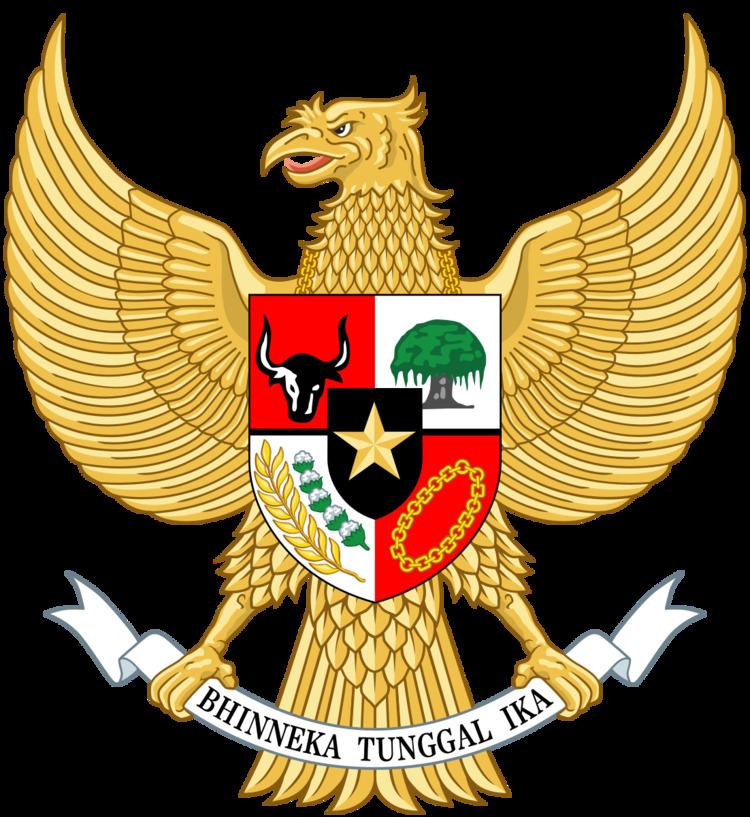29 May 1997 1999 → 62 seats, 17.00% 56 seats, 14.89% 89 11 | 282 seats, 68.10% 62 seats, 17.00% 325 89 43 27 | |
 | ||
Legislative elections were held in Indonesia on 29 May 1997. There were actually three elections in one as voters were electing members of two levels of regional government as well as the House of Representatives. This was to be the last election of President Suharto's New Order regime, which collapsed a year later. Like the preceding New Order elections, it was won outright by the Golkar organization.
Contents
Participants
Indonesian law at the time only allowed three organisations to participate in elections - the United Development Party (PPP), the Indonesian Democratic Party (PDI) and Golkar (functional group), an organisation which started off as a confederation of NGOs, and was officially not a party.
Election campaign
The 27-day campaign ran from April 27 to May 23, with a quiet period of five days before polling day.
Media coverage
The mass media tended to favour "a particular election participant" (Kristiadi et al., p84), for example Suara Karya newspaper only reported on Golkar campaign activities, and did not mention the PDI or PPP campaigns at all. On the other hand, the daily Media Indonesia was rather more balanced, but overall, Golkar campaign speakers received far more coverage.
In the later stages of the campaign, media coverage was dominated by reports of campaign violence. Suara Karya in particular reported three times as many violent incidents involving the PPP than any other paper.
Campaign issues
Not a single election participant started the campaign by announcing or focusing on its main themes, therefore the public really had no idea what they were offering. The campaign was dominated by "sloganistic issues" with very little substance (Kristiadi et al. p82). For example, all three election participants promised to address problems such as poverty and corruption, but none actually said how they would do this. In fact, Kristiadi says that the only difference between this campaign and the previous one in 1992 was that there was less use of verses from the Koran to try and attract support.
The "Mega-Bintang Phenomenon"
Following the government's forced replacement of PDI leader Megawati Sukarnoputri by Soeryadi at the party's 1996 Medan conference, the PDI tried hard to put forward an independent image. Meanwhile, many of Megawati's supporters gravitated towards the PPP, in a phenomenon known as the "Mega-Bintang" coalition. Bintang means "star", and was the symbol of the PPP. This was an entirely unexpected occurrence. Megawati was seen as representing secular politics, while the PPP was an Islamic party, but the two found common ground as a coalition of the oppressed.
PPP officials explicitly rejected the term "coalition", and said the increase in their support was a symbol of the revival of their party. However, posters and symbols carried by Megawati supporters made it clear what the "Mega-Bintang" coalition really meant. The government then banned the use of "Mega-Bintang" posters and symbols, saying it was contrary to election regulation. This ban was used by the security forces as an excuse to remove all such symbols.
Campaign participants
According to Kristiadi et al., there were three types of people who took part in the campaigns:
More than 200 people died during the course of the campaign, mostly in road traffic accidents and through being trapped in burning buildings during the disturbances in Banjarmasin.
Intimidation and other irregularities
There were reports in the press of intimidation and “buying support”, for example pressure on teachers to urge older high school students (the minimum voting age was 18) to vote for "a particular election participant" (Kristiadi et al., p82) with a 'reward' for compliance and 'punishment' for failure. There were also other reports of known PPP and PDI supporters being intimidated.
There were also disputes between employees, who wanted voters to cast their ballots at their places of work, and local government officials, who wanted them to vote near their homes, as each wanted to ensure they met their responsibility to achieve their quota of Golkar votes.
